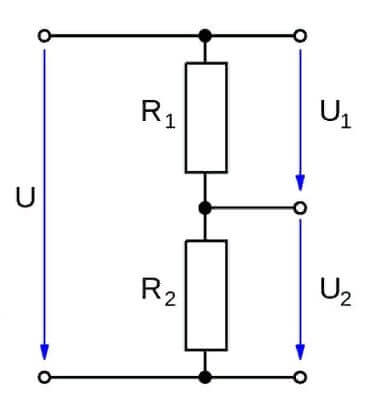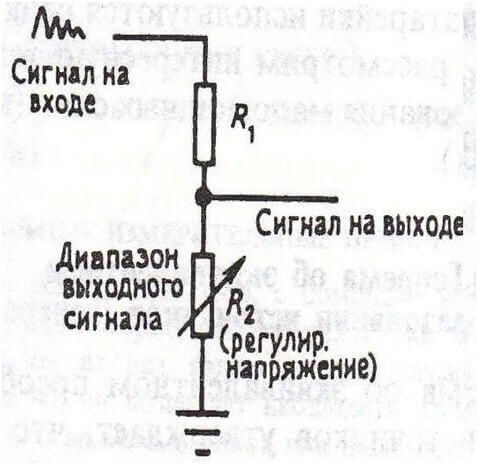Voltage divider calculator
A voltage divider is a simple and convenient way to get the desired voltage at a specific point in the circuit. It is used in feedback circuits to measure the output parameters when the output is tens of volts, and the measuring input of the microcircuit is designed for units or fractions of volts and for many other purposes. The simplest option is based on resistors, there may be 2 or more.
Let's figure out how to calculate this element of the chain. You can do this manually or use the following online calculator, which calculates the voltage divider on the resistors:
The main thing that should not be forgotten is that the divider current should be 1 or more orders of magnitude higher than the input load current. This is necessary in order to minimize voltage drops and maintain the stability of the output parameters. After that, proceed to the calculation of current and voltage.
If your divider consists of two elements, then the current through it is calculated by the formula:
I = Uin / (R1 + R2) = Uin / Rtotal
Or resistance for a given current:
Rtotal = Uin / I
We know R common for a given I, the input voltage and how much we need to get at the output. We calculate the resistance:
R2 = Uout * Rtotal / Uin
Then:
R1 = Rtotal-R2
If you need to determine the parameters of the chain by known resistances and input voltage - calculate the output by the formula:
Uout = Uin * R2 / R1 + R2
So, knowing the voltage at the output, you can calculate it at the input:
Uin = (Uout * R1 + R2) / R2
This is the main method for calculating the resistive divider, it can also be capacitive or inductive. In this case, instead of the resistance of the active R, the reactance Xc or Xl appears in the calculations.
To adjust the output voltage of the resistor divider, a trimming or variable resistor is installed instead of the lower resistance. The calculations are no different - they use the maximum value on a variable resistor. You can also limit the minimum output voltage by setting a constant in series with the variable, then the minimum is calculated without taking into account the variable. This scheme is convenient to use if you have resistors with a large tolerance, and you need to get accurate output parameters.
You can save time by using the online calculator, in it you can calculate the values of the elements taking into account the desired output and input voltage. Using a calculator will save your time if you need to calculate a large circuit or you are confused and cannot figure out how to calculate a resistive divider with a load.
Note that the elements need to be selected not only at face value, but also in power, because with a large load current, you need to calculate a circuit for high currents. The calculation results of the online calculator will indicate how many watts a resistor is needed.







